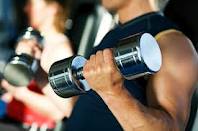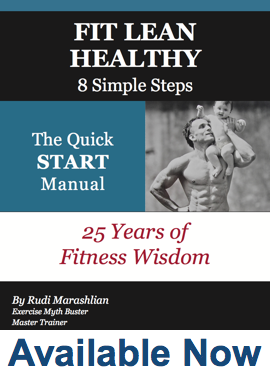In simple arithmetic terms, what is someone trying to do when they’re trying to lose weight? They’re trying to create a difference between energy coming into the body (as food) and energy being burned (energy expenditure). To lose weight you need less energy being put in (that would be food, folks) and more being used by the body. If the opposite is occurring – more going in than being used, you end up with a surplus of energy and many of us have experienced the end result of that… additional body fat.
A fairly simple way to explain how energy is used in your body is with a model called the Total 24-hour Daily Energy Expenditure (TEE). Researchers Dr. Leibel and Dr. Rosenbaum suggest that TEE can be separated into resting metabolic rate (RMR), about 60% of TEE; the thermic effect (heat and energy-releasing reactions) of exercise and physical activity, about 30% of TEE; and the thermic effect of food (digestion, absorption and metabolism of nutrients), about 5 to 10% of TEE.
As you can see, RMR has a large influence on a person’s metabolism and the ability to use energy. As trainers we want to enhance this aspect of the Total 24-hour Daily Energy Expenditure so more energy is being used (more calories burned by the body even at rest) and we definitely DON’T want to reduce it. So, what is it that we must avoid and what must we make sure we do in order to increase RMR? Luckily the answer is very simple.
AVOID LOW-CALORIE DIETING
Hill (2004) states that basal metabolic rate (BMR; very similar to RMR but measured using even stricter guidelines) can be suppressed up to 20% by dieting. The main reason for the slow down of metabolism with dieting is that people tend to lose a lot of muscle mass in diet-only programs (no matter what is said to the contrary by those marketing specific low-calorie diets) and muscle is the magic ingredient for maintaining your resting metabolic rate.
PARTICIPATE IN EXERCISE, SPECIFICALLY STRENGTH TRAINING
If losing muscle mass results in a reduction of resting metabolic rate, then the answer is to build muscle mass. The most efficient way to do this is with a safe and efficient weight training program but even moderate intensity aerobic activity can increase your resting energy expenditure. In a 16-month study done by Potteiger and colleagues in 2008 it was found that adult females who did aerobic exercise 3 to 5 days a week for 20 to 45 minutes per session at moderate intensity saw an average increase in RMR of 129 calories per day. The males who exercised aerobically for the same times and intensity saw an average increase of 174 calories daily.
The good news, as far as helping your body burn more energy every moment of every day, is that you don’t have to starve yourself – in fact that’s the worst thing you can do. You will have to exercise or be physically active on a regular basis to keep your muscles active and maintain muscle mass. The most efficient way to increase your resting metabolic rate is to do regular strength training.



